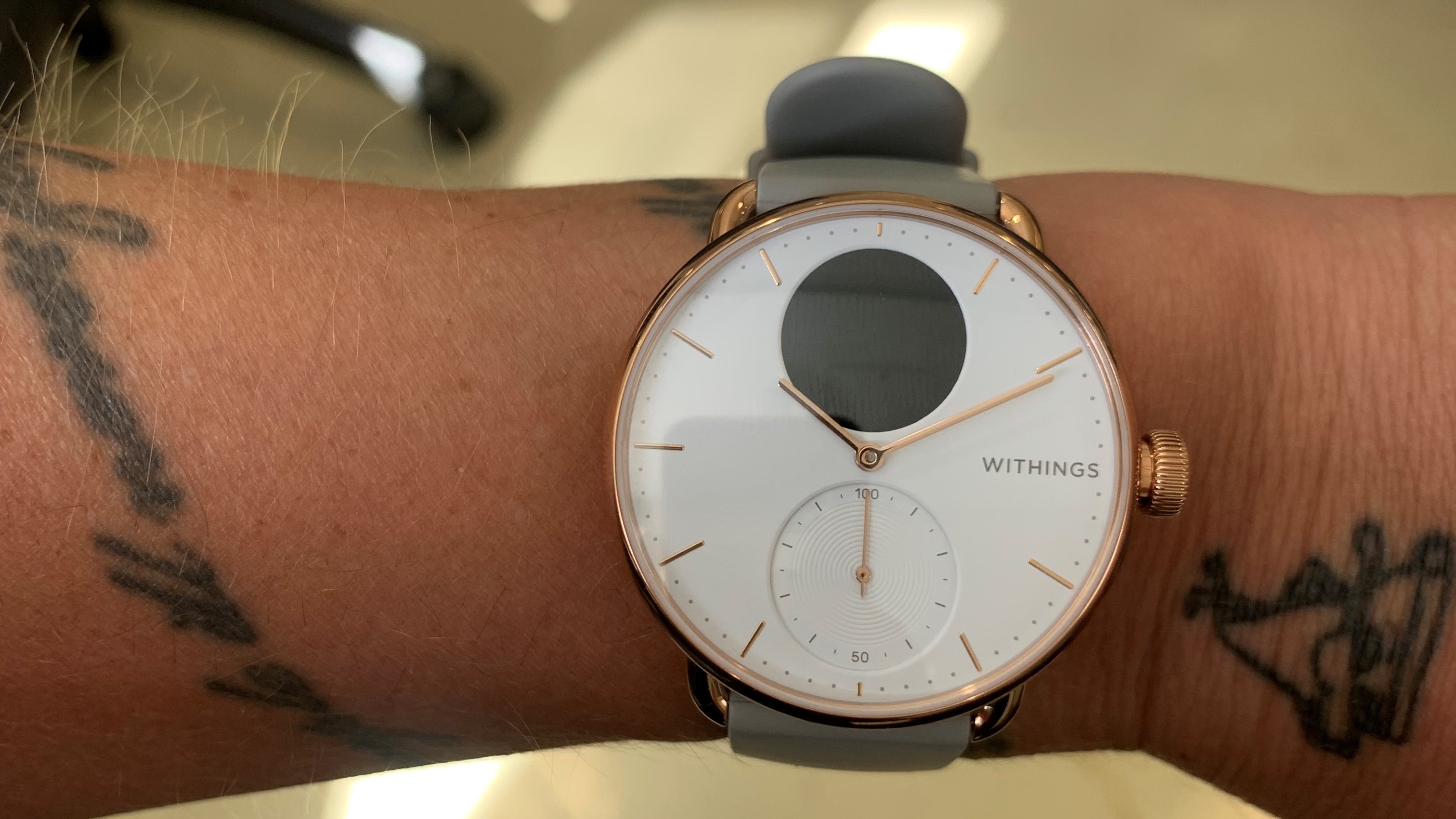Live Science Verdict
The hybrid Withings ScanWatch delivers real-time health and fitness stats, such as oxygen levels, ECG and sleep data, directly to your wrist. Although it’ll cost you serious money, we reckon this model is more than worth the investment.
Pros
- +
Beautifully designed
- +
Intuitive health and fitness tracking
- +
Responsive crown mechanism
Cons
- -
Expensive
- -
No touchscreen
Why you can trust Live Science
The Withings ScanWatch is a stripped-back, sophisticated addition to the fitness tracker lineup, striking a perfect balance between a traditional wristwatch and a contemporary fitness tracker.
Compatibility: iOS, Android. Uses the Health Mate app
Battery life: Up to 30 days of normal use + 20 days in power reserve mode
Display and screen size: Passive Matrix OLED (PMOLED) screen, 38mm and 42mm
GPS: Yes
Water resistance: Up to 5ATM (50 meters)
Heart rate tracker: Yes
Sleep tracker: Yes
Colors: Blue, white, and black faces with silver or gold trim. More than 20 watch straps available.
The crown on the side of the watch has been ingeniously repurposed to suit a modern-day tracker. Rather than manually adjusting the hands, it allows you to scan through an array of features on the clock face, like workout mode, ECG and oxygen saturation monitoring, step count and distance.
We put the ScanWatch under rigorous testing and it became increasingly impressive along the way. This aesthetically alluring health and fitness tracker sweeps into our best fitness trackers buying guide as a medical-grade health and wellness tool.
Price and availability
The MSRP of the Withings ScanWatch is $279.95 in the US and £249.95 in the UK and includes a two-year warranty, 30-day trial and free shipping. You can purchase the watch in a 38mm and 42mm model from the Withings website, which ships worldwide, and the Health Mate app is free to use.
Design and display
The minimalist design features a stainless steel case, chrome dial hands, Passive Matrix OLED (PMOLED) screen with a sapphire glass clock face and a wraparound waterproof rubber band that secures using a buckle. The analog dial displays the time with an additional sundial below indicating your progression toward daily goals.
Setup was fuss-free and simply required us to charge the watch, download the Health Mate app and sync via Bluetooth. The watch navigated us through all the how-tos and must-knows, helping us set everything up as we went, rather than inundating us with information from the off.
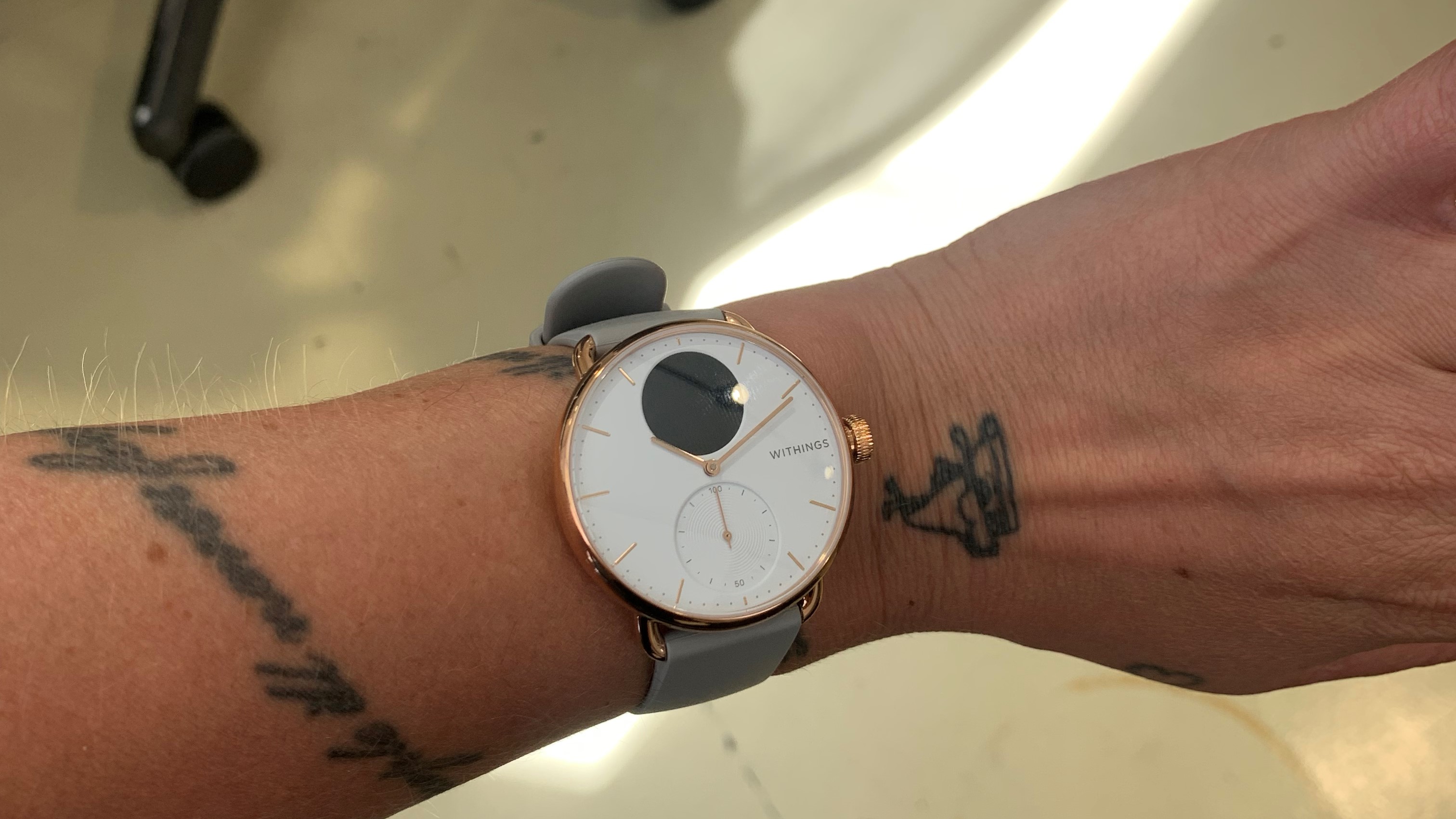
The crown on the side of the watch removes the need for fussy touchscreens and rolls through all features on the small display within the clock face (which you can manually edit in-app). The app and smartwatch offer clear-cut simplicity – a soothing balm compared with the hectic amount of data, features and apps available on some fitness trackers.
Withings works with institutions such as Harvard Medical School to design its wearables, ensuring all health devices are clinically validated, medical grade and suitable for home-based health monitoring.
Features
The ECG, heart rate, oxygen saturation, sleep and respiratory rate monitoring capabilities are the standout features on this watch. Selecting the ECG button from the display (or app) allows you to hold your hand over the watch for 30 seconds while the watch measures heart rate. During testing, the results were immediately available on the app alongside a playback of our heartbeat flittering along a graph.
The ScanWatch can detect irregularities in your heart rate (known as atrial fibrillation) that could indicate a heart attack or serious health problem. The app allows you to download and share reports directly with your doctor and continues to measure your heart rate in the background every 10 minutes to create a heart rate pattern. We could even set up notifications to tell us when an irregular heartbeat occurs and the watch encourages you to take an ECG if this happens.
Senses under the watch face allow the device to monitor oxygen saturation levels. Anything more than 90% is considered normal, but the app will tell you where you sit on the scale and track you over the months to determine a pattern. We chose to be notified if our levels dropped, which is handy to have on standby.
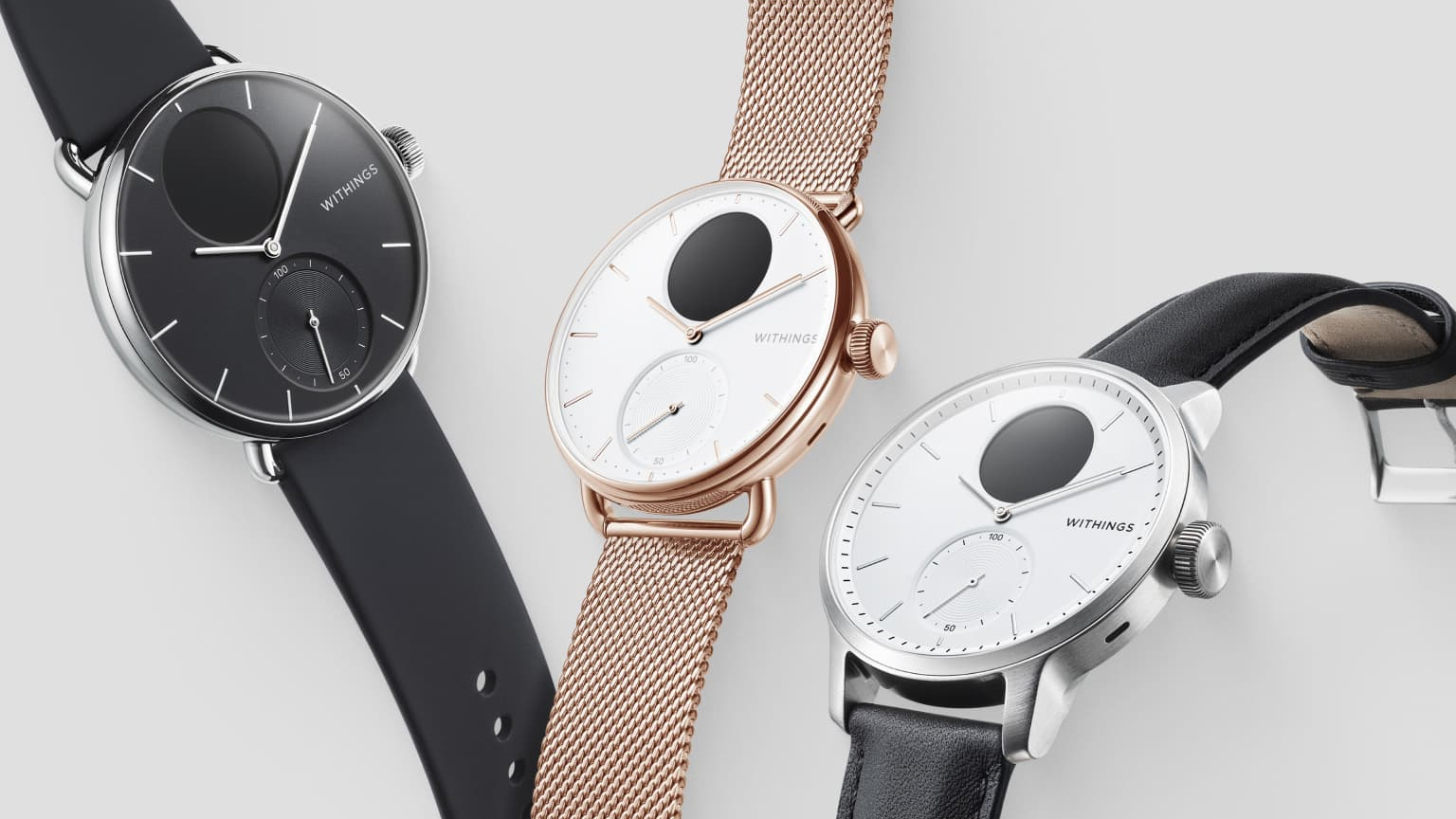
We usually wear an Oura Gen 3 ring (designed primarily as a sleep tracker), so we were keen to try out the sleep monitor on the Withings watch. The ScanWatch awards a sleep score consisting of total sleep, deep and REM sleep, heart rate averages and details of interruptions and how long they lasted. We compared this against the Oura ring to find little variance, with only a 5% difference between the total scores and less than 30 minutes between total sleep data. Both trackers also noted the same disturbances during the night and for the same period.
A setting on the watch allows you to select a workout and hit record. There are many workout modes available and we were relieved to see weights were among them. As with most fitness trackers, the smartwatch collects metrics like pace, elevation, location, distance, heart rate, and those all-important calories (metabolic and total) – and you can map a run route via GPS, too. Certain activities – such as swimming or walking – are auto-detected, delivering a recap straight to your app with key stats collected.
Performance
We were impressed with the collaborative relationship between the Withings ScanWatch and the Health Mate app. The lack of glitches is refreshing and the app comes to life the second you use a feature on the watch, although we did have some problems trying to log certain data (such as Macros).
The band’s workout mode came with its wins and challenges. If you’re tracking a run, we recommend enabling GPS and setting it to ‘always on’ in your smartphone settings, then shifting your watch at least an inch below your wristbone and tightening the strap as much as possible.
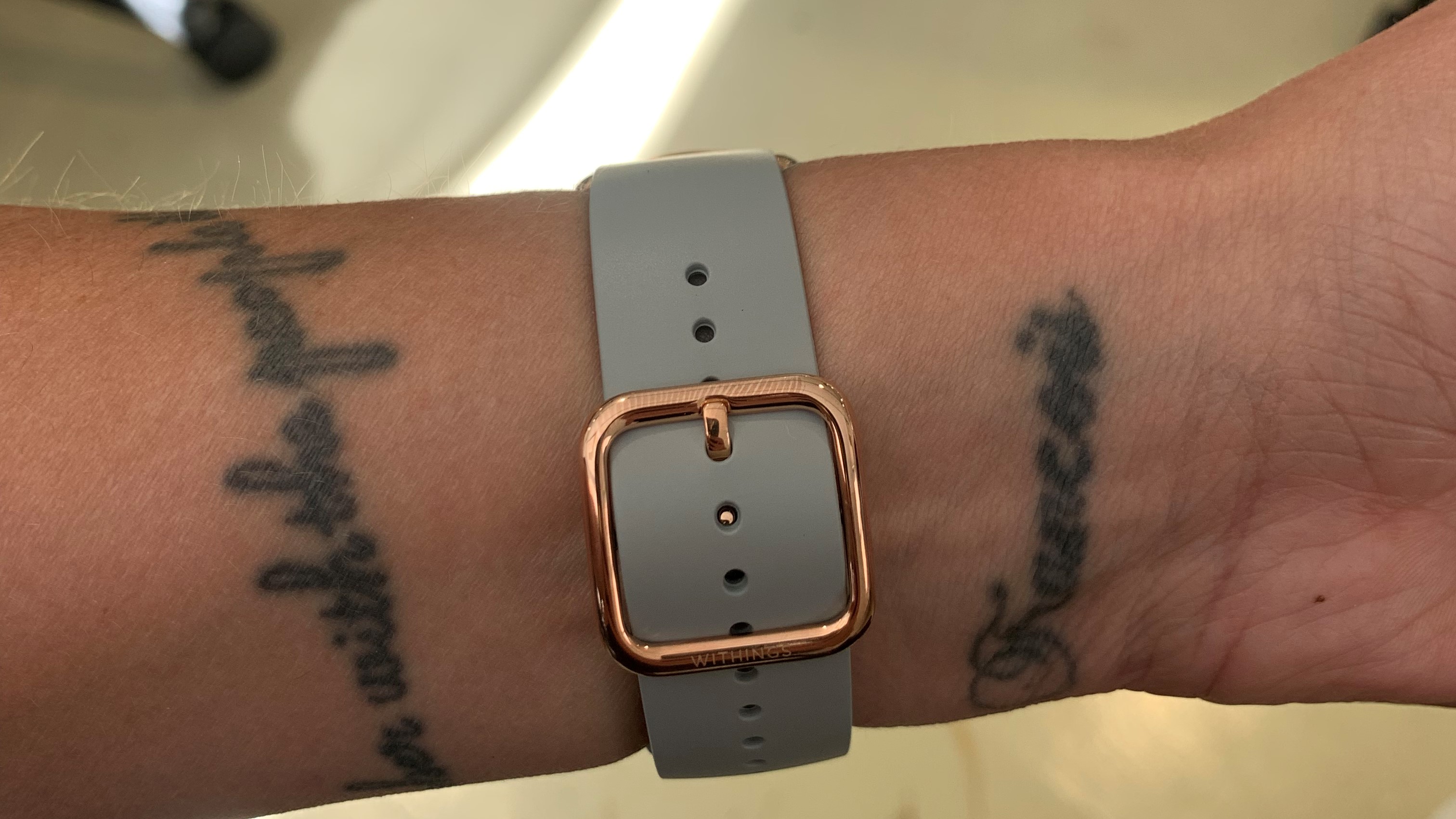
Most of your metrics come from heart rate data, so many metrics won’t track unless this is detected. Our app couldn’t locate our heart rate data, so we performed the above and tightened the strap more than usual, which helped to get this kickstarted.
Verdict
The Withings ScanWatch is a beautifully designed, easy-to-wear fitness tracker packed full of treats. For those hoping to take their health more seriously, this smartwatch is a brilliant investment and offers an everyday MOT to keep your engine running efficiently from the inside out.
Deep and clear insights provide a look at the efficiency of your heart and lungs, how you’re handling exercise, and why your sleep is affecting your everyday health. It isn’t cheap, but they say you can’t put a price on your health – and we agree.
If this product isn’t for you
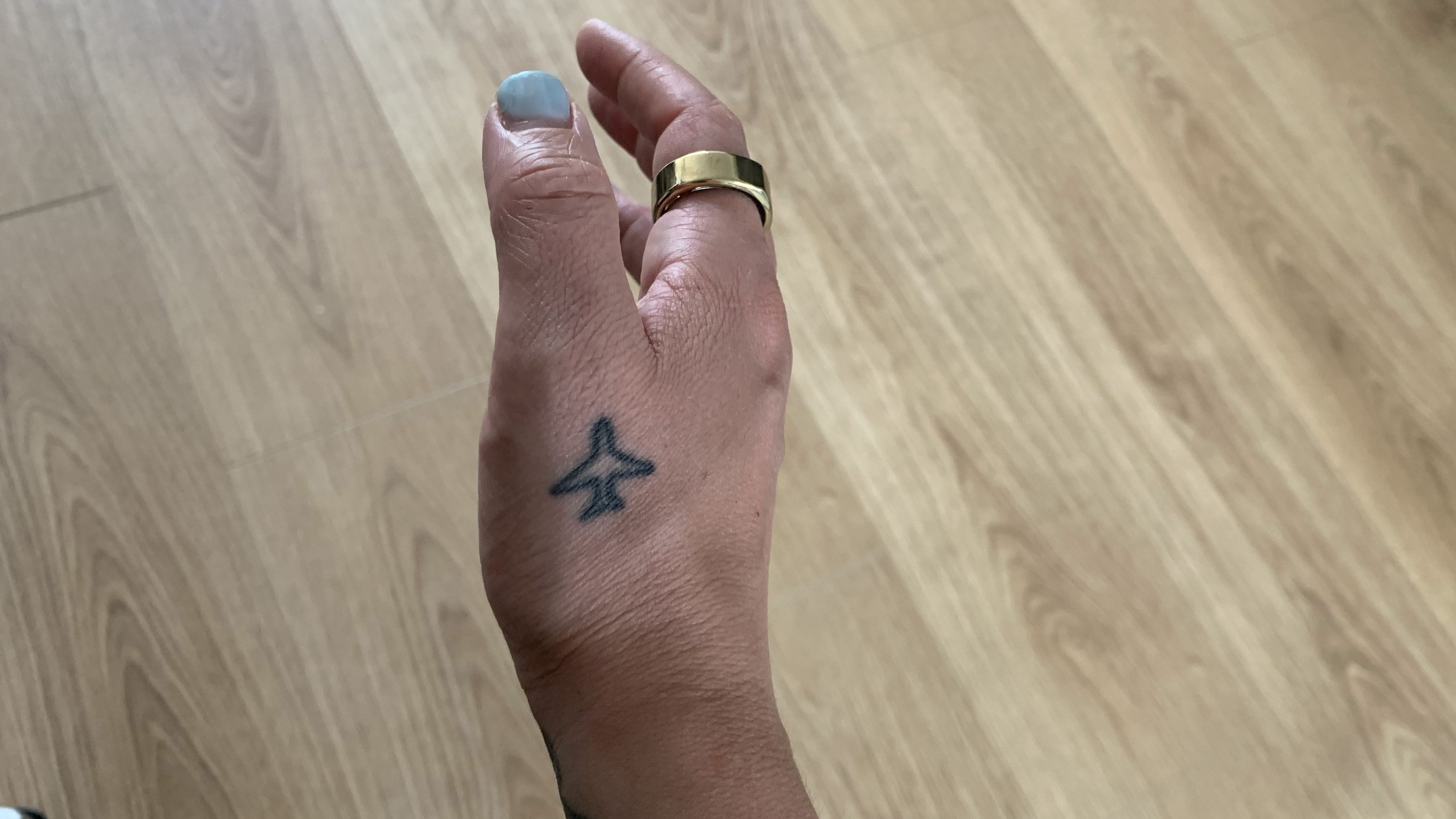
If you like the idea of tracking health from your finger, the Oura ring (pictured above) could combine new jewelry with an investment in your health. It’s designed primarily as a sleep tracker, but you can also monitor workouts and access daily wellness scores based on your activity, sleep, recovery and oxygen levels. It’s more expensive than the Withings ScanWatch but it performs the role of a health and fitness tracker incredibly well.
If you’re on a mission to save some money, the Xiaomi Mi Smart Band 7 mirrors the Fitbit look without the cost. Capable of tracking everyday activities and metrics, this fitness tracker also monitors sleep and oxygen levels for less than $60/£50.

Sam Hopes is a level III fitness trainer, level II reiki practitioner, and resident fitness writer at Future PLC. Having trained to work with both the mind and body, Sam is a big advocate of using mindfulness techniques in sport and aims to bring mental wellbeing to the forefront of fitness. She’s also passionate about the fundamentals of training and how we can build more sustainable training methods. You’ll find her writing about the importance of habit-building, nutrition, sleep, recovery, and workouts.
